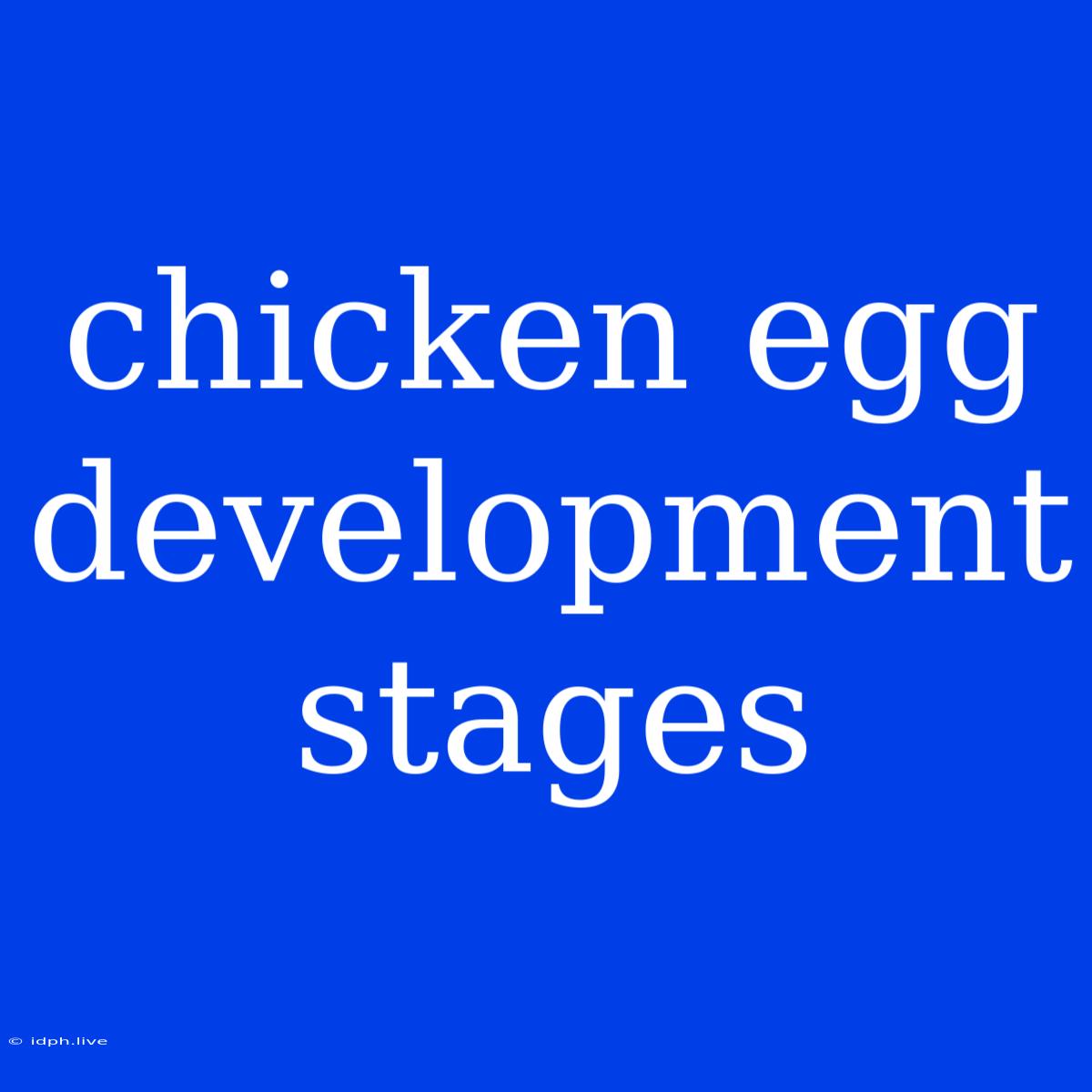The Incredible Journey: Chicken Egg Development Stages
Have you ever wondered what happens inside a chicken egg to transform a tiny speck into a fluffy chick? It's a fascinating process! Let's dive into the incredible journey of chicken egg development, stage by stage.
1. Fertilization: The Beginning of Life
The journey starts with fertilization. A rooster's sperm fertilizes the egg inside the hen's body. The fertilized egg, containing the chick's genetic material, begins its descent through the oviduct.
2. The Blastodisc: The First Sign of Life
As the egg moves down the oviduct, the blastodisc – a small, circular area on the yolk – transforms into the blastoderm, the first sign of life within the egg. This stage marks the beginning of cell division and embryo development.
3. Albumen Formation: Nourishing the Growing Chick
The egg white, also known as albumen, forms around the yolk. This protein-rich fluid provides nutrients and hydration to the developing chick throughout its growth.
4. Shell Membranes: Protecting the Embryo
Two delicate shell membranes form, creating a protective barrier between the developing embryo and the outside world.
5. Shell Formation: The Egg's Protective Shell
As the egg progresses, a calcium carbonate shell develops, providing the ultimate protection for the growing chick. The shell's porous structure allows for gas exchange, ensuring the embryo receives oxygen and releases carbon dioxide.
6. Early Embryonic Development: Organ Formation
Inside the shell, the embryo begins to develop. A heart forms and begins beating, blood vessels develop, and the chick's organs start to form.
7. Incubation: The Transformation Begins
Once the egg is laid, the incubation process begins. The ideal temperature for incubation is around 37.5°C (99.5°F), typically provided by a brooding hen.
8. Embryonic Growth: Rapid Development
During incubation, the chick undergoes rapid growth. Its limbs, beak, feathers, and other body parts develop.
9. Pipping: Breaking Out of the Shell
After approximately 21 days of incubation, the chick begins to pip the shell, using its beak to create a small hole. This process signals the chick's readiness to hatch.
10. Hatching: The Moment of Birth
Finally, the chick breaks free from the shell, emerging as a fluffy, chirping creature. The hatching process can take a few hours to complete.
Understanding Chicken Egg Development: Significance and Applications
The knowledge of chicken egg development is essential for the poultry industry, as it allows for better breeding practices, optimized incubation methods, and a deeper understanding of chick health.
From the humble egg to the adorable chick, this remarkable journey showcases the wonders of life and the intricate processes that lead to new beginnings.

